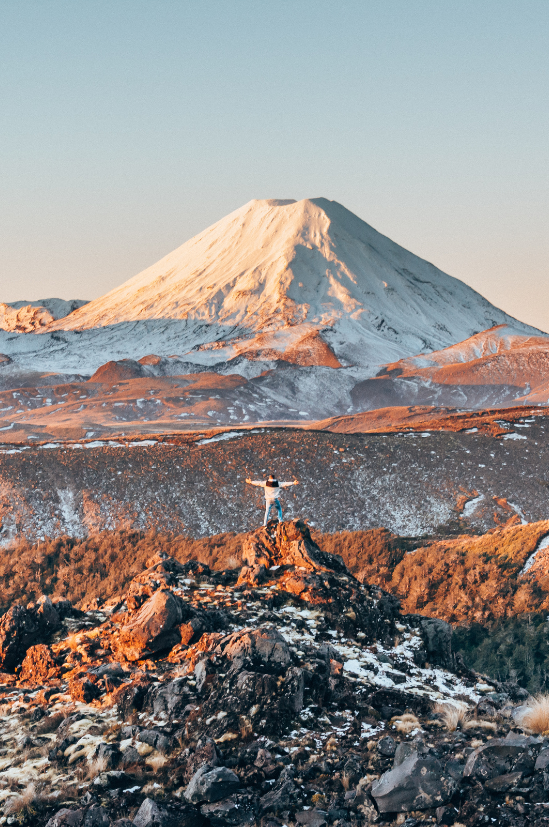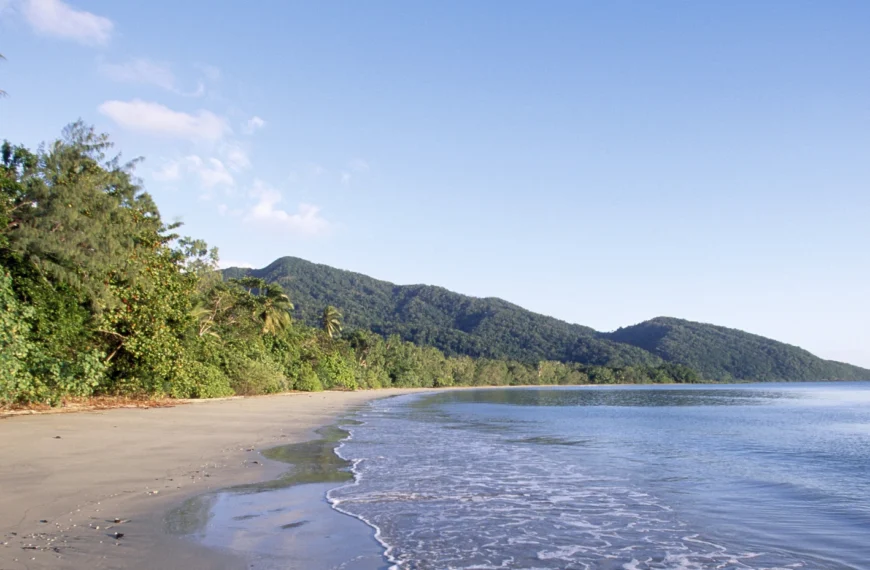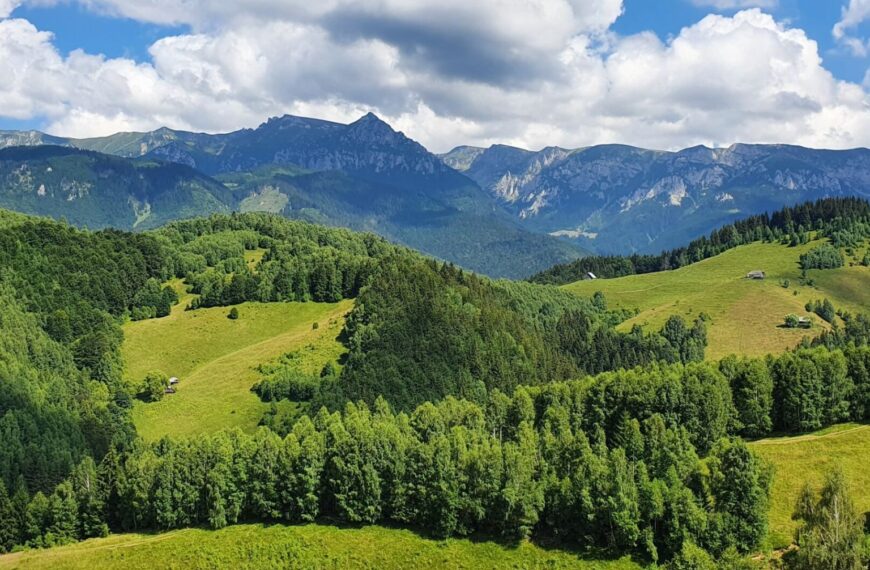The landscape tells stories at Tongariro National Park. Volcanic peaks pierce the sky, ancient legends flow through valleys and ecosystems flourish in a raw, living wilderness. It’s New Zealand‘s oldest national park and the first UNESCO World Heritage site recognised for cultural and natural values, making it an incredible destination to experience nature and heritage intertwined.
Perhaps it’s the challenge of world-class hiking that calls to you, or you want to gain a deeper understanding of Māori guardianship. Maybe it’s the rare wildlife that draws you in. Either way, this guide reveals why Tongariro National Park transforms all who venture there.
Tongariro National Park’s Dual World Heritage Status
A Landmark of Cultural and Natural Recognition
Tongariro National Park has a rare dual UNESCO World Heritage status, placing it among a select group of global landscapes recognised for embodying the living relationships between people and place. It was first inscribed in 1990 for its outstanding natural landscapes and active volcanoes. Then, it became the world’s first cultural landscape under revised criteria in 1993, recognising the mountains’ sacred importance to the Māori iwi of Ngāti Tūwharetoa and Ngāti Rangi.
In 1887, Māori chiefs gifted the Tongariro, Ngauruhoe and Ruapehu mountains to the park to ensure their protection for future generations. The Māori have a profound spiritual connection with the land and consider these peaks living ancestors.
Volcanic Majesty and Dynamic Landscapes
Three active volcanoes continuously shape this park. Mount Ruapehu is New Zealand’s largest active volcano. Mount Ngauruhoe is the park’s most active vent and has a classic symmetrical cone. Mount Tongariro last erupted in 2012 and is a sprawling massif with multiple craters. New features emerge from this shifting geology, such as fumaroles, rockfalls and trails, creating new discoveries for visitors year after year.
A dramatic alpine world unlike anywhere else has formed here and continues to change. Glacial erosion and volcanic activity collide, with a landscape shaped by explosion craters, lava flows, acidic crater lakes and colourful mineral pools.
Iconic Tongariro Hiking Trails
The Tongariro Alpine Crossing
Many consider the 20.2-kilometre Tongariro Alpine Crossing New Zealand’s best day hike because it’s dotted with steaming vents, red craters and the luminous Emerald Lakes. An adventure through surreal volcanic terrain awaits, with glimpses into the fragile resilience of life in a harsh environment. Mosses cling to cooled lava, and delicate alpine flowers sprout in the shadow of smouldering craters here.
This trail is best for experienced hikers prepared for sudden weather shifts. The park asks visitors to practice responsible hiking to protect its fragile ecosystems, such as staying on marked trails, packing out all rubbish and using designated shuttle services.
Northern Circuit and Shorter Walks
Hikers seeking deeper immersion should consider the multi-day Tongariro Northern Circuit, which loops around Mount Ngauruhoe. They can choose guided options for ecological and cultural storytelling.
Shorter hikes are also available to explore alpine shrublands, lava flows and native forests at a gentler pace. The Taranaki Falls Walk and Whakapapa Nature Walk are accessible to a wider range of explorers.
Tongariro Wildlife and Biodiversity
Unique Species in a Volcanic Wilderness
Tongariro’s landscapes are brimming with life. In the summer, twisted mountain cedars and alpine flowers such as mountain daisies and gentians dot its volcanic slopes. Meadows, wetlands and forests support rare birds, including the endangered blue duck (whio), the inquisitive North Island robin and the mighty New Zealand falcon. Insectivorous sundews and native orchids are shining examples of the park’s rich biodiversity.
Conservation Success Stories
Tongariro National Park is a living example of collaborative conservation. Some of New Zealand’s most successful community-led restoration efforts have occurred here, including Project Tongariro and the active guardianship of Ngāti Tūwharetoa and the Department of Conservation (DOC). Large-scale pest control programmes have protected native species like the whio and the North Island robin, and wetland restoration projects have revived vital ecosystems.
Still, conservation here is an ongoing effort by rangers, iwi, volunteers and conscious travellers. Visitors contribute by choosing experiences that help protect Tongariro’s fragile alpine, forest and riverine habitats. They can also participate in volunteer projects and contribute to rewilding funds.
Māori Culture and Guardianship
A Gift of Protection
When Ngāti Tūwharetoa’s paramount chief gifted the sacred peaks to the government in 1887, he established a model of Indigenous-led conservation. Guided by the principle that cultural values and environmental stewardship are inseparable, it protects Tongariro National Park’s natural beauty and spiritual and cultural integrity.
Ngāti Tūwharetoa are active kaitiaki (guardians) of their ancestral home alongside the Department of Conservation. The mountains are their living ancestors, and they invite travellers to step into this tradition respectfully by staying on marked trails, honouring tapu (sacred) sites and learning from Māori guides and storytellers.
Why Tongariro Matters
Few places on Earth offer such vivid lessons about resilience, stewardship and the deep ties between people and nature as Tongariro National Park. It acts as a living classroom where visitors can witness geological forces, cultural heritage and conservation innovation converging.
Ecosystems are dynamic here—in fact, they are some of the most dynamic in the world. Against the odds, life thrives in these volcanic landscapes sculpted by fire and ice, including alpine plants taking root in barren lava fields, endangered birds adapted to extreme climates and native forests that have recovered after eruptions.
Here, we can gather crucial insights into how ecosystems might respond to global environmental changes. The rare ecological resilience we see in this park today is thanks to Indigenous leadership in conservation. As Dr. Hugh Wilson, former Director-General of New Zealand’s Department of Conservation, notes, “Tongariro National Park exemplifies how cultural values and ecological integrity can be woven together to create a living landscape that sustains both biodiversity and indigenous heritage. It is a global model for conservation where people and nature are inseparable.”
Supporting Conservation and Cultural Preservation
By visiting Tongariro, travellers connect with the Māori guardians, conservationists and DOC rangers protecting this land. It’s a rare experience to witness how they work together to restore native forests, protect endangered species and sustain cultural heritage. Responsible travel choices also directly fund pest control programmes, ecological monitoring and cultural preservation projects that sustain the park’s future.
Hiking responsibly on Tongariro’s volcanic trails, particularly when guided by Māori guardians and conservationists, will give you a profound sense of connection to nature and a growing awareness of our place within it. Tongariro’s natural and cultural treasures, including its stark red craters, Emerald Lakes and ancient lava flows, are worth protecting for future generations.
A deeper understanding of what it means to be a guardian of the natural world will be yours through volunteering, cultural immersion or simply travelling with care at Tongariro National Park.
Interested in exploring New Zealand’s wild places?
Journeys With Purpose offers private, conservation-focused journeys to New Zealand, with tailor-made itineraries built around your passions. We are also planning our first hosted journey in New Zealand—subscribe to our newsletter for updates and inspiration for your next trip.
DIG A LITTLE DEEPER
Contribute to Positive Impact on a Hosted Journey.
Connect with Impact Partners around the world during a Private Experience.
View our 2024 Hosted Journey to The Great Karoo.






